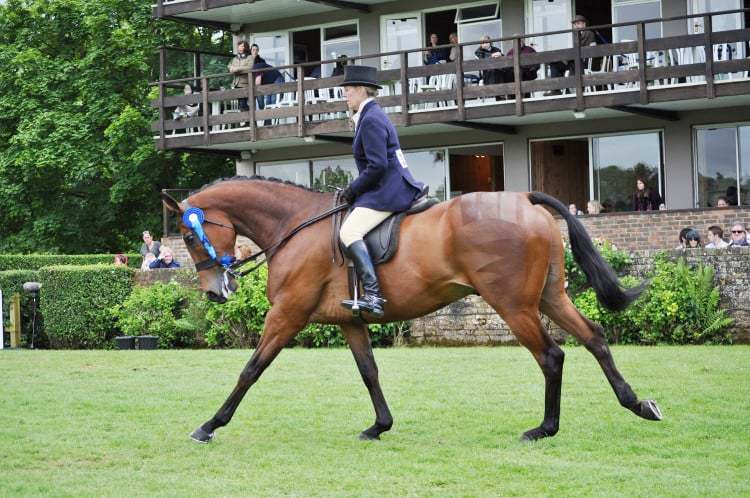RoR offers essential advice on retraining a racehorse

Retraining a racehorse can be a fulfilling experience and with the growing number of RoR classes, ex-racers are proving to be suitable across a range of disciplines. However, if you’re buying a horse straight off the track he will need careful training – both on the ground and in the saddle.
We spoke to Vicky Smart at RoR for advice on how to help your horse make the transition from racehorse to riding horse.
Patience is key
Not every horse is a challenge and some adapt easily, while others need a little more time. As with any horse and any situation there are no hard and fast rules, but there are a few key things you need to consider when buying your first thoroughbred.
- Try and get a history from the trainer and speak to the stable lad or lass who looked after and rode him to get an idea of his personality and quirks. Most trainers will be happy to tell you about any veterinary history that may be important, which will give you a guide as to whether he needs time off and what he may or may not be able to do in the future.
- Patience is key. You must remain calm but confident at all times whatever behaviour is thrown at you. The sharp-minded thoroughbred will soon pick up on any deficiencies you exhibit in that department.
Back to basics
- Some of the aids you give will be different to what he is used to and some will be the total opposite. For example, when you shorten up the reins you are actually giving cues to go faster! It is important to go back to basics so the horse understands what you are asking. It is these early stages of re-training that are the most important and the more time you spend establishing a proper understanding the more you will achieve in the long term.
- The horse will be used to riding out in a ‘string’, which means you could encounter problems hacking out on your own. Riding in company can also present its own issues as it will be associated with training gallops.
Time to adjust
- The horse will not be used to being tied up outside his stable so is likely to fidget and become anxious. Similarly, racehorses are not used to standing still when mounted as the jockey is usually legged up while the horses are walking.
- Your new horse may not be used to receiving the huge amounts of affection you wish to shower him with; he may seem a bit grumpy and want you to leave him alone. Don’t take this personally – just give him time to adjust.
- Some racehorses will never have been turned out before, so you may need to give him a mild sedative before letting him loose in the field. It is a good idea to turn out in a small paddock or pen first with another horse close by, or a field buddy such as an old pony.
Regular routine
- Thoroughbreds are very sensitive and quick minded so are often prone to exhibiting signs of stress, particularly if boredom sets in.
- Life for the horse in training is based on routine. A large DIY livery yard with lots of horses and ponies being fed and exercised at different times of the day may be quite stressful for him. A smaller yard with a regular routine is usually a better option until he settles down and gets used to you and his new surroundings.
Be realistic about your ability and experience and don’t be afraid to seek advice. The RoR has a helpline which you can call on 01488 648998 or email ([email protected]) if you need support. We have a number of experts with experience retraining ex-racehorses and knowledge of various equestrian disciplines.
Don’t miss Rudall’s Round-Up: RoR Eventing which sees Rhi Lee-Jones head to Brightling Park for the Retraining of Racehorses Grassroots Finals. Available NOW on H&C Play and Amazon Video.






